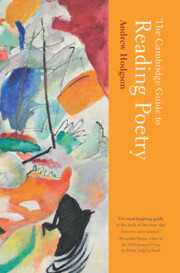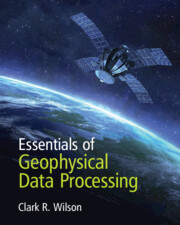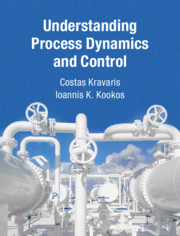Refine search
Actions for selected content:
36901 results in Cambridge Textbooks

The Cambridge Guide to Reading Poetry
-
- Published online:
- 04 November 2021
- Print publication:
- 18 November 2021
-
- Textbook
- Export citation

Essentials of Geophysical Data Processing
-
- Published online:
- 02 November 2021
- Print publication:
- 21 October 2021
-
- Textbook
- Export citation

Understanding Process Dynamics and Control
-
- Published online:
- 29 October 2021
- Print publication:
- 08 April 2021
-
- Textbook
- Export citation
Chapter 11 - Thunderstorms and Tornadoes
-
- Book:
- Weather
- Published online:
- 26 October 2021
- Print publication:
- 28 October 2021, pp 209-225
-
- Chapter
- Export citation
Contents
- from Chapter 3 - Our Atmosphere: Origin, Composition, and Structure
-
- Book:
- Weather
- Published online:
- 26 October 2021
- Print publication:
- 28 October 2021, pp 46-58
-
- Chapter
- Export citation
Chapter 15 - Climate Change and Weather
-
- Book:
- Weather
- Published online:
- 26 October 2021
- Print publication:
- 28 October 2021, pp 266-278
-
- Chapter
- Export citation
Contents
- from Chapter 1 - Weather Variables
-
- Book:
- Weather
- Published online:
- 26 October 2021
- Print publication:
- 28 October 2021, pp 1-19
-
- Chapter
- Export citation
Contents
- from Chapter 5 - Water
-
- Book:
- Weather
- Published online:
- 26 October 2021
- Print publication:
- 28 October 2021, pp 83-98
-
- Chapter
- Export citation
Contents
- from Chapter 7 - Precipitation
-
- Book:
- Weather
- Published online:
- 26 October 2021
- Print publication:
- 28 October 2021, pp 130-140
-
- Chapter
- Export citation
Chapter 10 - Air Masses, Fronts, and Midlatitude Cyclones
-
- Book:
- Weather
- Published online:
- 26 October 2021
- Print publication:
- 28 October 2021, pp 186-208
-
- Chapter
- Export citation
Contents
- from Chapter 15 - Climate Change and Weather
-
- Book:
- Weather
- Published online:
- 26 October 2021
- Print publication:
- 28 October 2021, pp 266-278
-
- Chapter
- Export citation
Contents
- from Chapter 9 - Global Wind Systems
-
- Book:
- Weather
- Published online:
- 26 October 2021
- Print publication:
- 28 October 2021, pp 161-185
-
- Chapter
- Export citation
Chapter 1 - Weather Variables
-
- Book:
- Weather
- Published online:
- 26 October 2021
- Print publication:
- 28 October 2021, pp 1-19
-
- Chapter
- Export citation
Chapter 2 - Spatial Representations of Weather Data
-
- Book:
- Weather
- Published online:
- 26 October 2021
- Print publication:
- 28 October 2021, pp 20-45
-
- Chapter
- Export citation
Chapter 8 - Wind
-
- Book:
- Weather
- Published online:
- 26 October 2021
- Print publication:
- 28 October 2021, pp 141-160
-
- Chapter
- Export citation
Boxes on Advanced Topics
-
- Book:
- Weather
- Published online:
- 26 October 2021
- Print publication:
- 28 October 2021, pp x-x
-
- Chapter
- Export citation
Credits
-
- Book:
- Weather
- Published online:
- 26 October 2021
- Print publication:
- 28 October 2021, pp 293-296
-
- Chapter
- Export citation
References
-
- Book:
- Weather
- Published online:
- 26 October 2021
- Print publication:
- 28 October 2021, pp 292-292
-
- Chapter
- Export citation
Contents
- from Chapter 8 - Wind
-
- Book:
- Weather
- Published online:
- 26 October 2021
- Print publication:
- 28 October 2021, pp 141-160
-
- Chapter
- Export citation
Chapter 9 - Global Wind Systems
-
- Book:
- Weather
- Published online:
- 26 October 2021
- Print publication:
- 28 October 2021, pp 161-185
-
- Chapter
- Export citation
